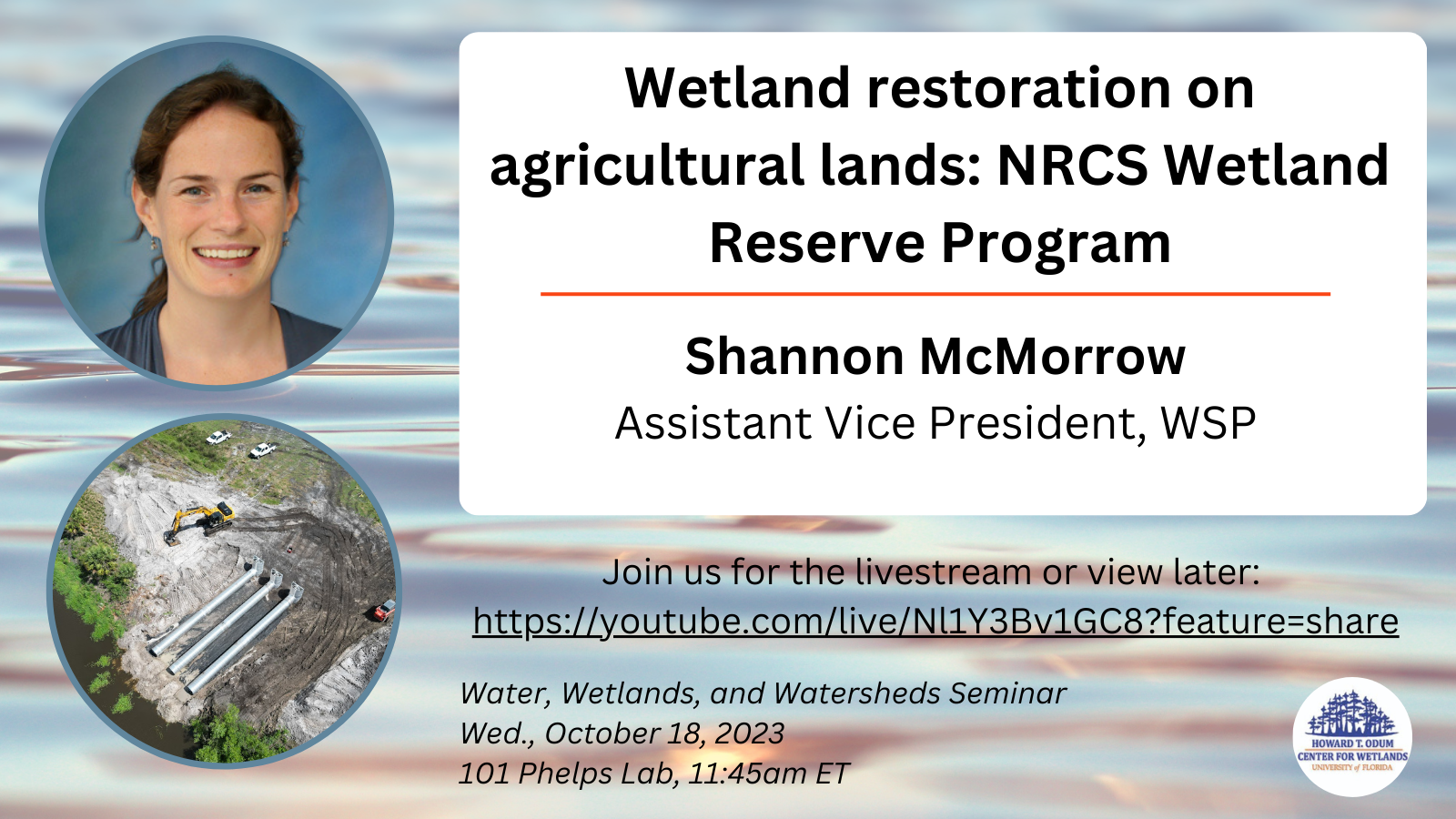
Shannon McMorrow, WSP, Assistant Vice President,
Join us for the livestream October 18th, 11:45am ET: https://youtube.com/live/Nl1Y3Bv1GC8?feature=share.
(Please visit our YouTube channel main page for the stream if there are any issues with the direct link.)
ABSTRACT
WSP, under contract to USDA’s Natural Resource Conservation Service (NRCS), has prepared Wetland Reserve Plan of Operation (WRPO) documents for easement tracts located in central and south Florida in the northern everglades region, as part of the NRCS Wetland Reserve Program (WRP). A WRPO is a conservation plan that identifies how wetland functions and values will be restored, enhanced, protected, maintained and managed to accomplish the goals of the NRCS WRP project area. The WRPO includes all required conservation practices and activities applicable to meeting the goals and long-term management requirements of the easement. For these projects, the process of developing the WRPO was a collaborative effort with NRCS, landowners, and WSP. The WRPO easement properties are generally characterized as improved pastureland or citrus; however, they historically consisted of a broad complex of swamps, prairies, marshes, and flatwoods. Agricultural drainage ditches have dramatically altered the natural wetland functions and ecological values of these sites.
The main goal of the WRPO is to return the conservation easement property to historic conditions; natural wetland and associated upland ecological communities (or as close as possible) that existed prior to agricultural manipulation (primarily ditching). Pre-disturbance historical aerial photography was the primary tool used to determine desired historic ecological communities, however soils data were also considered. Field assessments of the easements were completed to gather information on: land use, vegetation, hydrology, relative “health” of the ecological communities, threatened and endangered species and wildlife habitat.
Using desktop and field gathered data, conceptual wetland restoration plans were prepared. Hydrologic models were utilized to evaluate the existing hydrology and then to develop a variety of alternatives for re-directing water at the site to achieve optimal hydrologic conditions. The restoration plans and modeling scenarios included a variety of engineering solutions to change site conditions including ditch blocks, ditch modifications, and culverts. The hydrologic alteration proposed in the restoration plans will result in an increase in overall acreage of wetlands on the properties compared to existing conditions. In addition to hydrologic modification, other conservation practices were recommended to achieve the goals of the WRP. Examples of these include invasive exotic plant management, range planting, tree/shrub establishment, and prescribed burning.
Landowner preferences, cultural resources, threatened and endangered species habitat, and off-site impacts were all considered during the development of the WRPO for each tract. Although, the wetland restoration is confined to these isolated tracts of land, the benefits are far reaching and significant. Local and “downstream” benefits include increasing groundwater recharge and improved water quality. Establishing these conservation easements also has the potential to establish, improve, and/or create contiguous wildlife habitat.
BIO
Shannon McMorrow has been working as an environmental consultant for WSP (Previously Wood, Amec Foster Wheeler, Amec, and Mactec) for the past 15 years. She graduated from the University of Florida in 2008 with a Master’s in Environmental Engineering Sciences. While working at WSP, Shannon has focused on the assessment of ecological integrity of natural and disturbed systems. She has gained extensive experience in the evaluation of wetlands, threatened and endangered species surveys and habitat assessments. She is proficient at coordinating environmental permitting efforts, and has worked closely with local, state, and federal agencies to ensure compliance with regulation. She also performs taxonomic identification of macroinvertebrates to assess habitat and water quality. She became a Professional Wetland Scientist (PWS) in 2018.
POSTCARD
